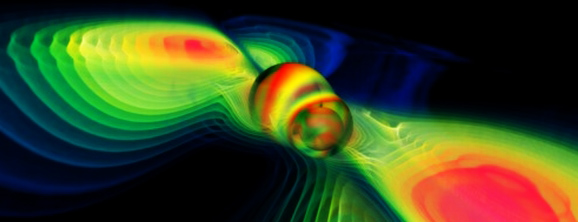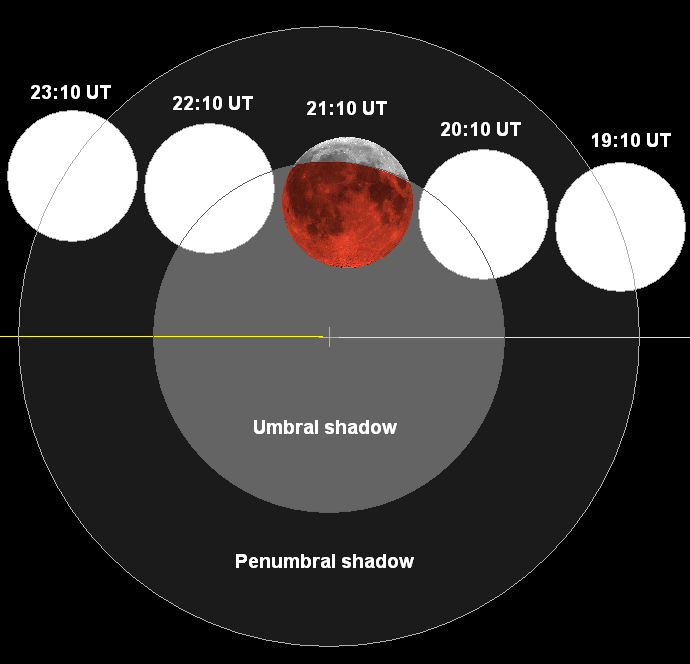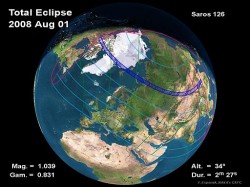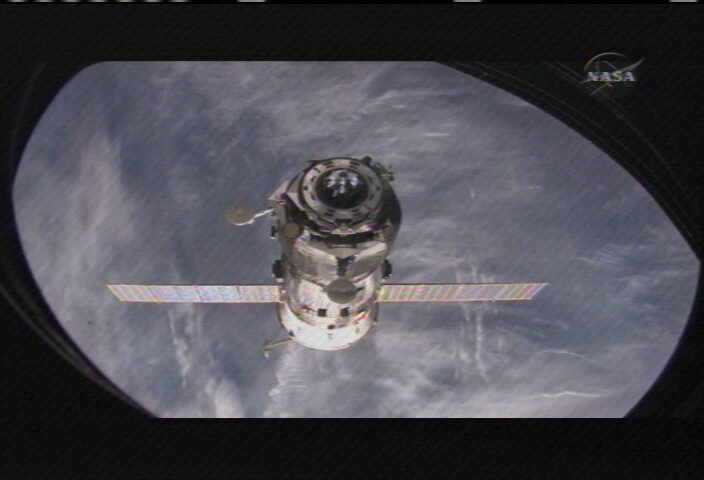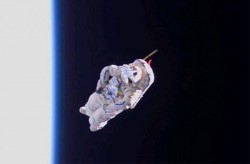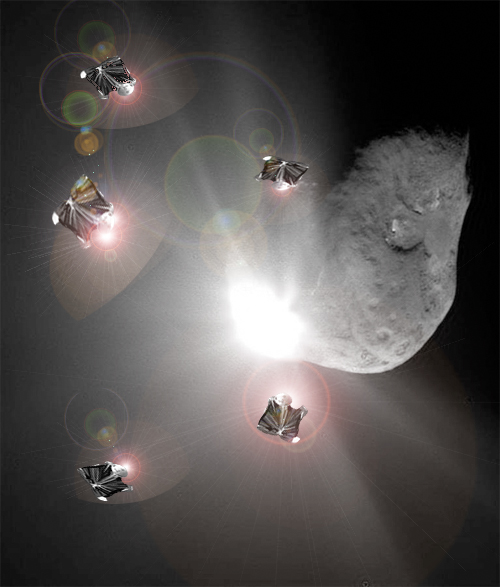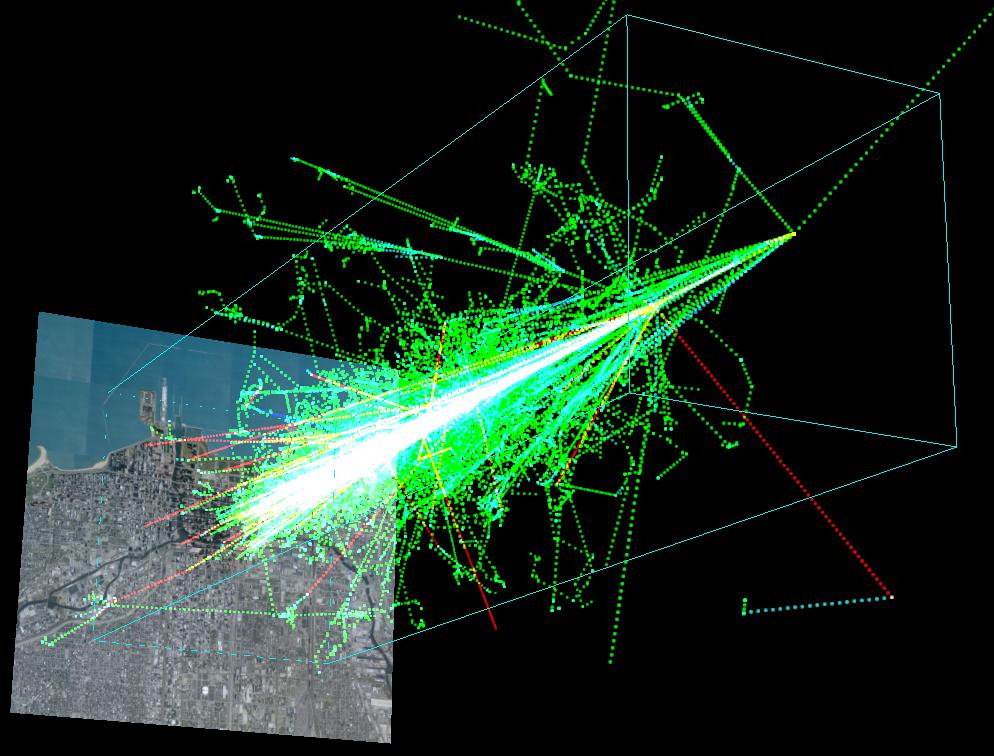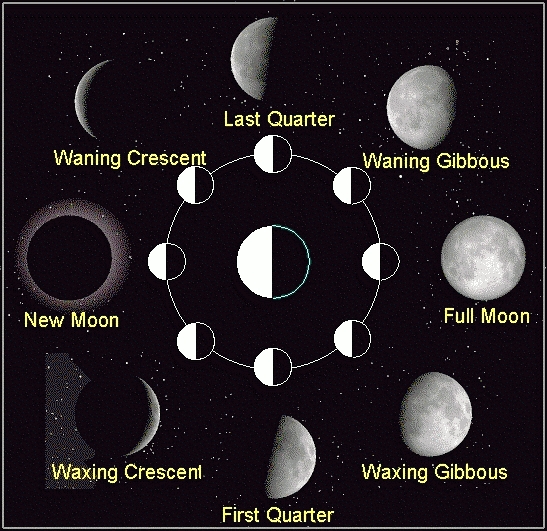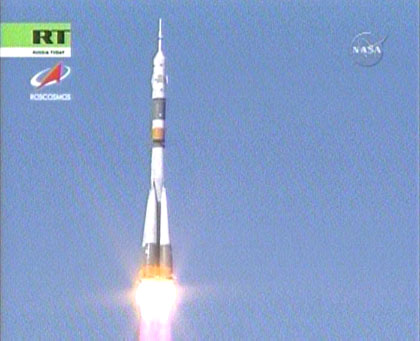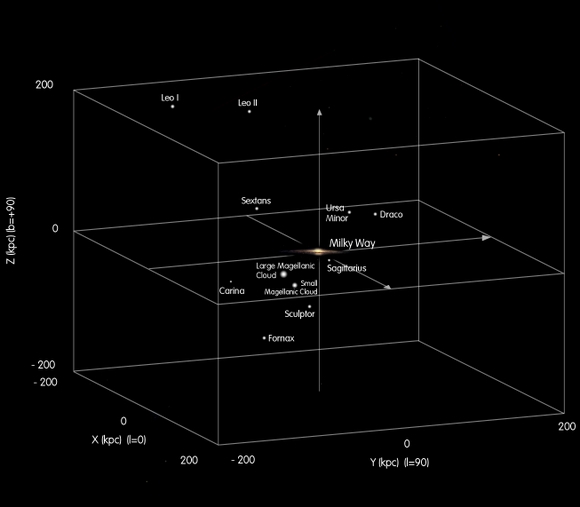The consequences of two black holes colliding may be huge, the energy produced by such a collision could even be detected by observatories here on Earth. Ripples in space-time will wash over the Universe as gravitational waves and are predicted to be detected as they pass through the Solar System. Taking this idea one step further, what would happen if three black holes collide? Sound like science fiction? Well it’s not, and there is observational evidence that three black holes can cluster together, possibly colliding after some highly complex orbits that can only be calculated by the most powerful computers available to researchers…
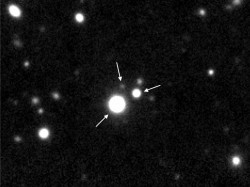
Back in January 2007, a quasar triplet was observed over 10 billion light years away. Quasars are generated by the supermassive black holes eating away at the core of active galaxies. Using the powerful W. M. Keck Observatory, researchers from Caltech were able to peer back in time (10 billion years) to see a period in the Universe’s life when active galaxies and black hole mergers would have been fairly common events (when compared to the calmer Universe of today). They observed three tightly packed quasars, an unprecedented discovery.
Now, scientists Manuela Campanelli, Carlos Lousto and Yosef Zlochower, all working at Rochester Institute of Technology’s Center for Computational Relativity and Gravitation, have simulated the highly complex mechanisms behind three interacting and merging supermassive black holes, much like the situation observed by Keck in 2007. The same group have worked on calculating the collision of two black holes before and have written a code that is powerful enough to simulate the collision of up to 22 black holes. However, 22 black holes probably wouldn’t collide naturally, this simply demonstrates the stability of the code, “Twenty-two is not going to happen in reality, but three or four can happen,” says Yosef Zlochower, an assistant professor. “We realized that the code itself really didn’t care how many black holes there were. As long as we could specify where they were located – and had enough computer power – we could track them.”
These simulations are of paramount importance to the gravitational wave detectors such as the Laser Interferometer Gravitational-Wave Observatory (LIGO). So far there has been no firm evidence to come from these detectors, but more time is needed, the LIGO detector requires several years of “exposure time” to collect enough data and remove observational “noise”. But what do gravitational wave astronomers look for? This is the very reason many different cosmic scenarios are being simulated so the characteristics of events like two or three black holes mergers can be identified from their gravitational wave signature.
Gravitational wave astronomers “need to know what to look for in the data they acquire otherwise it will look like just noise. If you know what to look for you can confirm the existence of gravitational waves. That’s why they need all these theoretical predictions.” – Manuela Campanelli, director of RIT’s Center for Computational Relativity and Gravitation.
Source: RIT University News

